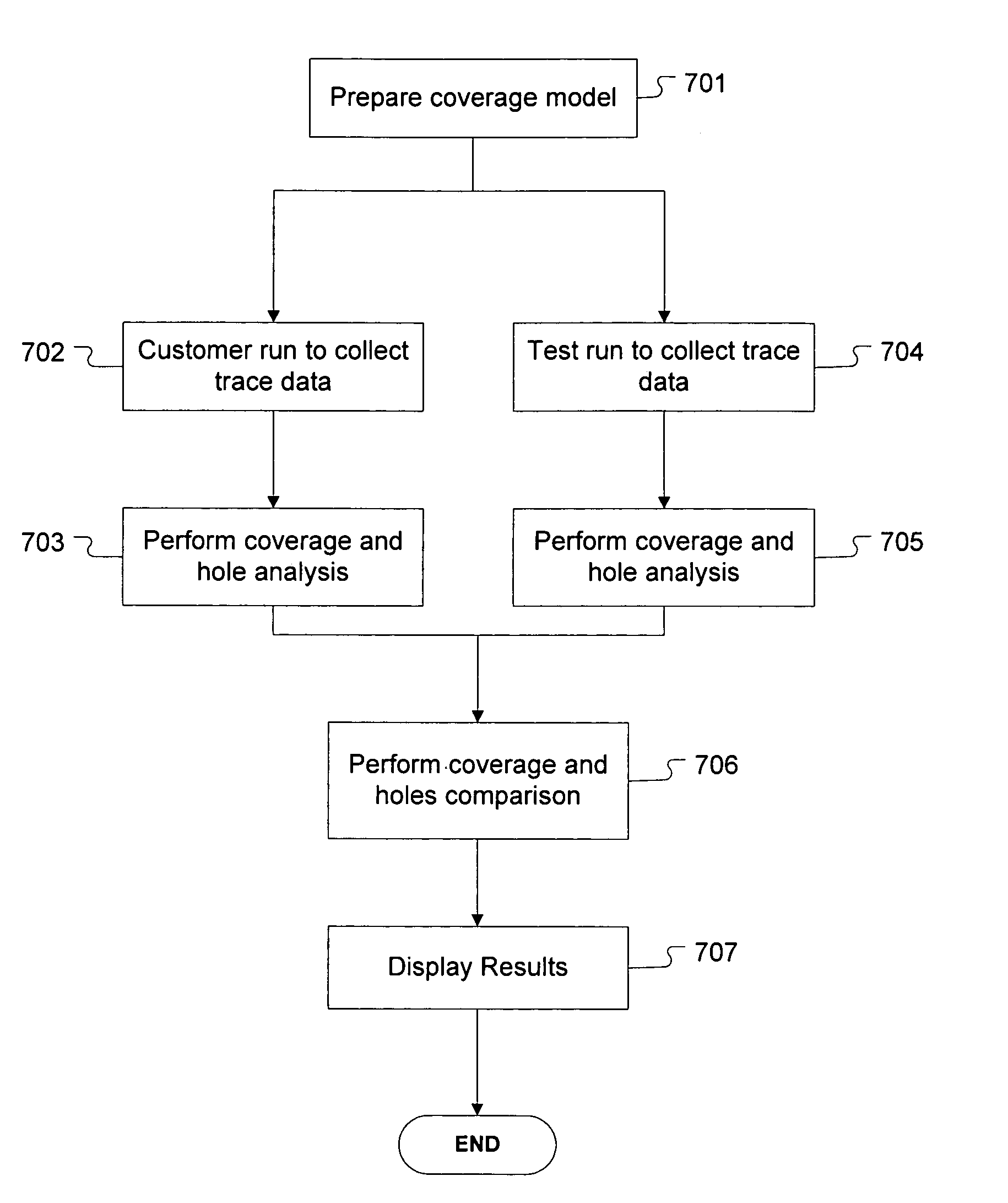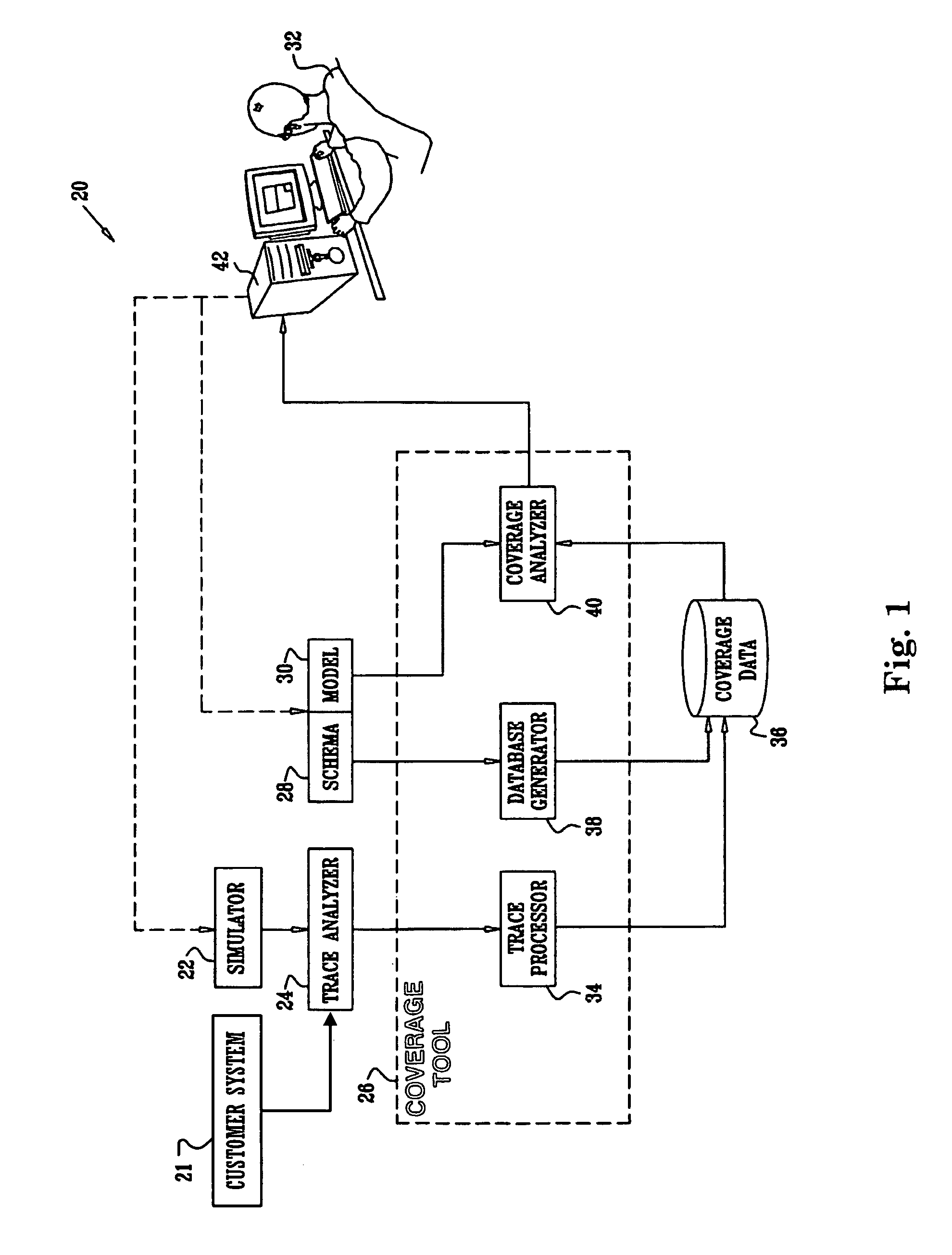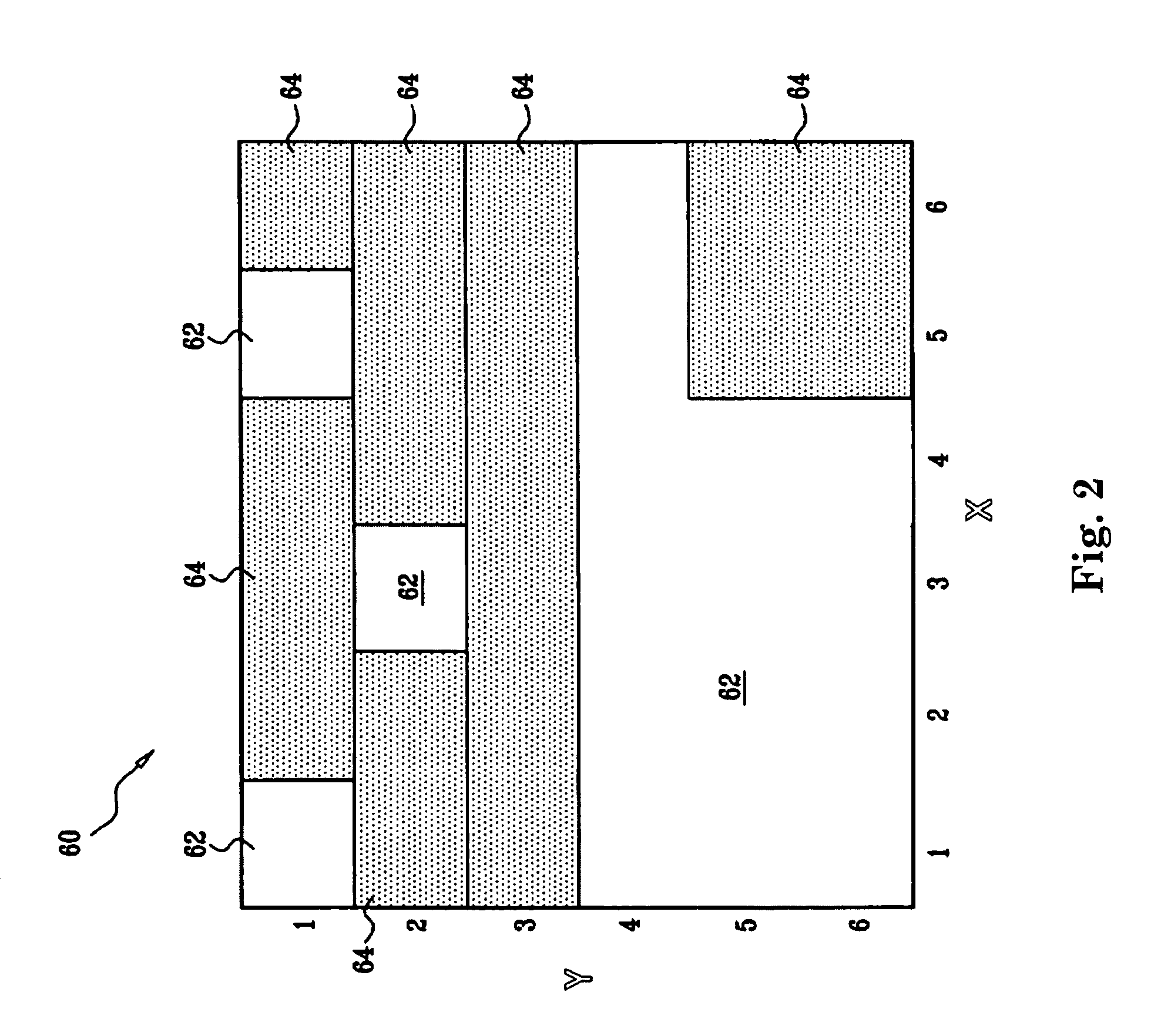Method for comparing customer and test load data with comparative functional coverage hole analysis
a functional coverage and customer technology, applied in the field of data operations, can solve the problems of difficult to separate produce too much data to easily filter important data from unimportant data, and achieve the effect of accurate operational test profiles and efficient comparison of customer and test profiles
- Summary
- Abstract
- Description
- Claims
- Application Information
AI Technical Summary
Benefits of technology
Problems solved by technology
Method used
Image
Examples
Embodiment Construction
[0021]One aspect of the present invention includes enhanced operations used for comparisons of test data. In order to reduce the amount of work done to collect data (e.g., instrumentation and special scripting) and to enable exploration of the data, the present disclosure explains a functional coverage methodology augmented for comparative functional coverage reports and functional coverage holes analysis. With the application of real data and enhanced capabilities to a general functional coverage data methodology, numerous trends and behaviors can be discovered to distinguish test data from the actual customer data.
[0022]FIG. 1 depicts an operation 20 for performing analysis of input from a customer system 21 and a test (simulator) 22 in accordance with one embodiment of the present invention. A simulator 22 runs a suite of tests on a design under test, and a trace analyzer 24 generates trace data, containing lists of events that occurred during testing and within the customer syst...
PUM
 Login to View More
Login to View More Abstract
Description
Claims
Application Information
 Login to View More
Login to View More - R&D
- Intellectual Property
- Life Sciences
- Materials
- Tech Scout
- Unparalleled Data Quality
- Higher Quality Content
- 60% Fewer Hallucinations
Browse by: Latest US Patents, China's latest patents, Technical Efficacy Thesaurus, Application Domain, Technology Topic, Popular Technical Reports.
© 2025 PatSnap. All rights reserved.Legal|Privacy policy|Modern Slavery Act Transparency Statement|Sitemap|About US| Contact US: help@patsnap.com



